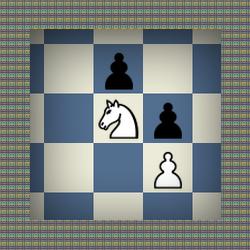
The Sicilian Hole, Part Three
In the first two parts of this series we discussed the cases where White firmly occupies the key central d5-square with one of his pieces. If such a centralized piece cannot be successfully challenged, Black usually experience serious problems. But as it turns out, even when Black can control the d5-square with his pieces and is ready to eliminate any intruder, he is still not out of the woods.
One of the typical ideas for White is to plant his knight to d5 anyway, and when it gets eliminated by one of the black pieces, White simply recaptures e4xd5. Such a trade dramatically changes the strategical situation in the center. Black is not going to suffer due to the weakness of the d5-hole anymore (because the hole gets 'repaired'), but White gains some space and a pawn majority on the queenside.
The next strategical masterpiece is probably one of the first high-profile games where this strategy was implemented. It is difficult to find another game where great Fischer would be so completely and unquestionably outplayed!
Geller convincingly demonstrated that if White manages to break Black's queenside blockade, then his pawns will be unstoppable in the long run.
It is amazing that almost a quarter of a century later, nearing the end of his illustrious career, aging Geller won a pretty similar strategical game against a very strong opponent:
The following game of Karpov clearly shows that even though Geller's plan is extremely powerful, it is not the only White's option. The permanent weakness of the c6-square was a bleeding wound in Black's position.

When White knight landed there the game was pretty much over. To tell you the truth, it is one of many Karpov games where it is difficult to pinpoint clear mistakes by his opponent!
The next game shows that the modern grandmasters study the classical heritage. Instead of trying to occupy the d5-square with one of his pieces, which is a typical way to fight the Sveshnikov Sicilian, Peter Leko starts implementing the Geller plan as early as move 7!
I hope that next time your opponent creates the d5-hole in a situation similar to the one we discussed in this series, you will take full advantage of it!






